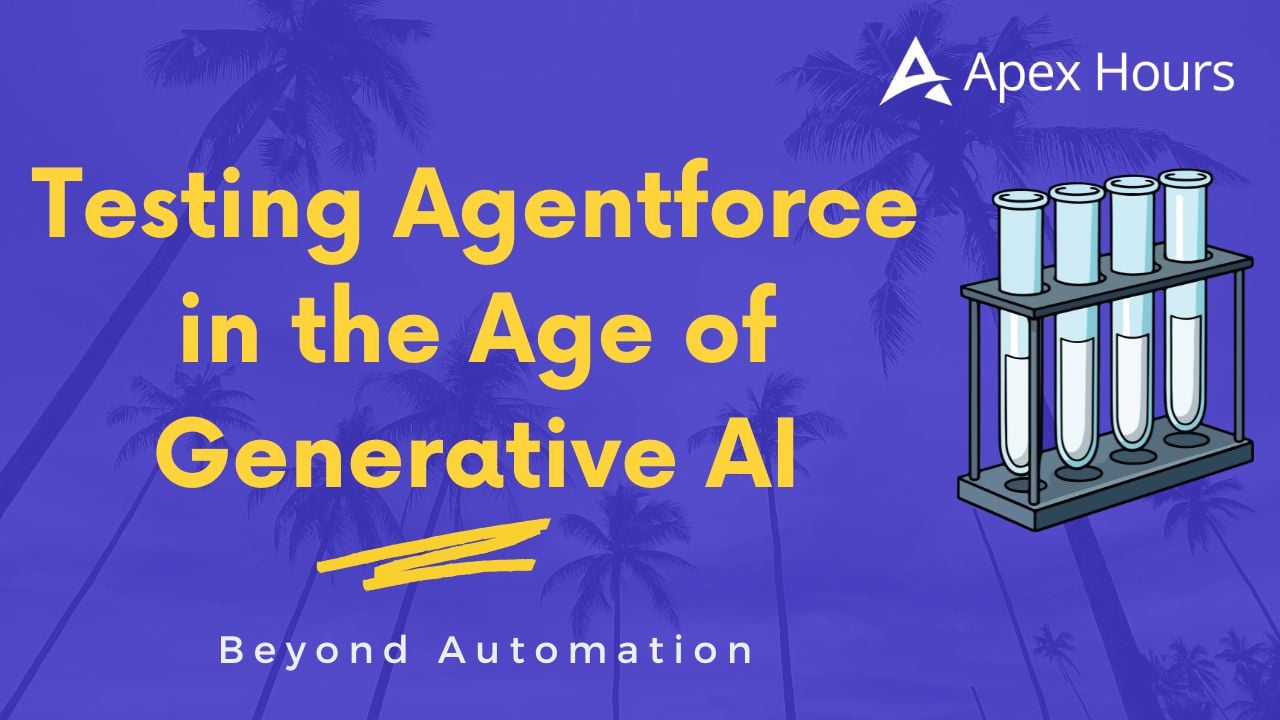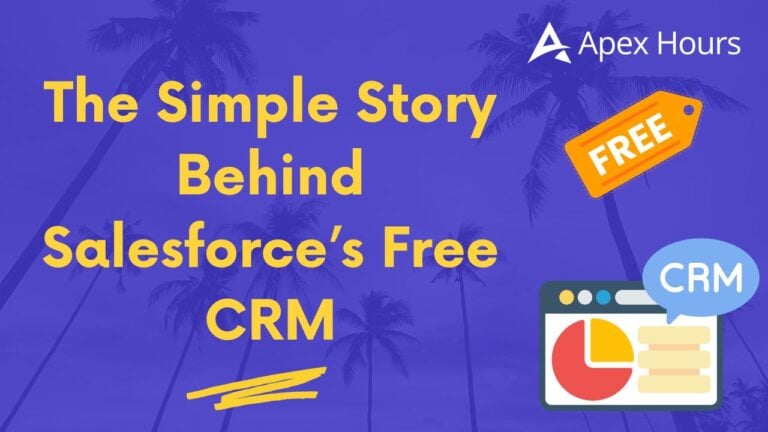

Beyond Automation: Testing Agentforce in the Age of Generative AI
Salesforce’s Agentforce is more than another automated test or chatbot product. It is one of the autonomous AI-agent platforms extremely incorporated with Salesforce’s arena: Flows, guardrails, external connectors, CRM, Data Cloud, Apex, and the Trust/Reasoning layers. Testing it demands growing QA expertise, not simply checking scripted flows, but also embracing modern practices in test automation, including AI, to confirm correctness, establish guardrails, provide reasoning, ensure context, ensure scalability, and facilitate action selection across multiple dimensions.
Here is a structure for testing Agentforce, including what distinguishes it from conventional automation testing, risks & governance, and a recommended test framework.
SUGGESTED READ: Reliable Testing with Generative AI-Powered Autopilot
What is Agentforce: Key Capabilities that Affect Testing?
To test perfectly, you need to know what Agentforce fixes:
- Reasoning Engine + Autonomous Agents: Agentforce agents do more than simply react to preset prompts; they also consider context and take action. It utilizes what Salesforce refers to as the “Atlas Reasoning Engine.”
- No-code/Low-code + Pro-code Blend: Agents are built with tools such as APIs, Apex, Flows, prompt templates, and external integrations.
- Layers of guardrails, trust, and security: These include the pre-established guardrails, data governance, Einstein Trust Layer, and other features to lower risks like bias, hallucinations, and data leaks.
- Tools for testing and lifecycle management: Salesforce offers an Agent Builder for creating agents, but more significantly, an Agentforce Testing Center for lifecycle management, which includes batch tests, synthetic tests, and scaling tests, among other features.
What makes Agentforce testing unique compared to conventional automation?
In light of those capabilities, the variations in your testing practice are:
| Test Dimension | Conventional Automation | Agentforce-style Tests |
| Predictability and Scripted Flow | You generate test scripts; you know the flow. Maintenance if API or UI modifications are made. | Natural language implies that flows, prompt templates, and reasoning aren’t always the same. The agent must select both the action and the topic. It should be resilient to withstand change. |
| Coverage of errors and edge cases | The majority of the edge scenarios you consider are explicit. | Unexpected behaviors should be identified, such as those that occur when the data context is unusual, when external connectors respond slowly, or when multiple data inputs change, among others. |
| Channels and Scale | Mainly test for mobile, web User Interface (UI), and possibly APIs. | Channels, external systems, flows, communications, etc., are all covered by Agentforce. Permissions, integrations, and data contexts between organizations should also be tested. |
| Security/Guardrails/ Compliance | Though not always in focus, it is mentioned. | In the center. Data leaks must be prevented, access controls must be followed, security limits should be tested, and auditability. |
| Natural Speech/Quick Change | Primarily known flows and organized inputs. | High degree of variation in user prompts. It is vital to assess for informal phrasing, misspellings, synonyms, and diversified terms. Confirm the topic classification also works well. |
Key Risks & Challenges Specific to Agentforce
These are primarily based on what Salesforce promotes and what early adopters say about agentic systems:
- Action and Topic Classification Errors: Agents should select the action (what the agent must do) and the proper topic (intent classification). Misclassification results in unsuitable behavior. A myriad of different user prompt kinds should be included in the testing.
- Drift and Model Degradation: The themes, actions, and prompts might become stale if your procedures, data, or business context change. Agents need to adjust, and tests need to prevent “drift.”
- Inadequate Data and Context: Responses may be incorrect or data may be sourced from an incorrect source if the agent lacks access to relevant information, whether it is unstructured or structured. Retrieval augmented generation (RAG) settings may also be significant.
- Non-deterministic behavior: Test runs might differ as agents might select distinct courses of action, or because prompt-based and generative elements might produce diverse results. That makes determining whether to fail or pass more problematic.
- Privacy, Security, Access Control, and Compliance: Agents must prevent leaks, respect user permissions, audit trails, and control unplanned exposure. They might also need to access sensitive data. Salesforce’s safeguards are useful, but security boundary scrutiny should be part of the testing procedure.
- Inappropriate Output, Bias, and Hallucinations: Even though Agentforce has safeguards, tests should precisely aim to elicit problematic conditions, such as unclear prompts, queries outside their purview, and content moderation issues.
- Scalability and Performance: Scrutinizing expenses, latency, throughput, chiefly when agents are used in production processes, through APIs, and with simultaneous loads.
- Explainability/Observability: Agents should trace decisions, meaning that logs or plan-tracers should be helpful after a decision was taken (why this action? why this topic?). Tests should check and confirm the existence and accuracy of logs and observability hooks.
Strategies for Effective Testing of Agentforce
Let us take a glance at a framework for testing generative AI systems like Gen AI Agentforce in a Salesforce arena. It can be tailored to your organization’s size and risk tolerance while taking into consideration the particular dangers associated with generative AI testing in enterprise settings.
| Strategy | What to Do | Purpose / Why It Matters |
| Clearly define the baseline test requirements in advance | • Determine the business-critical topics and flows. • Enumerate “Golden results” (anticipated actions, outputs). • Get different user prompts ready. • Describe the data circumstances that are vital (such as unavailable external records or missing fields). | Gives you benchmarks to gauge accuracy, drift, and errors. |
| 2. For batch and synthetic testing, use the Testing Center | Salesforce offers the Agentforce Testing Center, which can automatically select test topics and actions, generate synthetic interactions (customer-like inputs) in bulk, and more. | Aids you in covering several prompt differences, finding misclassifications, and checking the accuracy of the action at scale. |
| 3. Human validation/review loop | Human QA or domain specialists must scrutinize sample outputs for subtleties like as meaning, tone, context alignment, and edge cases, even when using synthetic tests. To pick up on nuances, such as regulatory compliance, brand voice, and ethical concerns. | To pick up on nuances, such as brand voice, regulatory compliance, and ethical concerns. |
| 4. Examine consistency & drift | • Record actual agent contacts. • Examine what the agent picked and what was projected. • Make use of measures such as action selection accuracy, accuracy in topic classification over time, and correctness rate. • When dropped, initiate re-training, re-evaluation, or speedy tuning. | Preserves trust and guarantees that the system develops appropriately rather than silently deteriorating. |
| 5. Privacy validation, security, and guardrails | • Examine permission limits: what happens if a user isn’t able to access a particular record? • Cleaning up inputs and dealing with distorted inputs. • Tests for data leakage: what information is revealed? • Verify the existence and comprehensibility of audit logs. • Examine guardrail triggers, such as inappropriate content and off-topic detection. | The risks of testing generative AI at scale can be expensive if not mitigated, as Gen AI Agentforce operates with corporate data. |
Building Trust: Fairness, Security, and Ethics
The basis for integrating Salesforce Agentforce into critical business processes is trust. Software testing strategies should address fairness, security, and ethics in addition to functionality when businesses incorporate Generative AI Agentforce into their QA pipelines. This is particularly crucial when dealing with the risks of testing generative AI, as results can be biased or unpredictable.
1. AI Testing Ethics
- Verify that test automation in AI does not inadvertently introduce bias into judgment.
- Clearly define the process for validating Gen AI Agentforce outputs against Salesforce’s business values and trust principles.
2. Safety Procedures
- Prevent sensitive Salesforce app and user data from being misused when used to generate AI-centric tests.
- Implement strong audit trails, access controls, and recurring evaluations for AI agents functioning in production-like situations.
3. Transparency and Fairness
- Aim for explainability: QAs and administrators need to know why an error was detected (or overlooked) by Agentforce.
- Encourage fairness by making sure test coverage takes into consideration the multiple roles, permissions, and use cases of Salesforce users across sectors.
Also Read: How Gen AI is Transforming Agile DevOps?
Case Examples / Illustrations
1. Testing AI Agents in Enterprise Systems
Take the example of a financial solutions company that uses Agentforce to authenticate its applications that interact with users. Regression suites often only covered transactions that were predefined. However, when testing AI agents in enterprise workflows, Agentforce dynamically produced situations were employed, such as unusual payment behaviors or compliance-driven edge circumstances, sections that traditional automation usually overlooks. This demonstrates how risks that scripted automation misses can be detected through testing generative AI applications in enterprise workflows.
2. Testing Generative AI Applications
Agentforce was used for testing generative AI applications that provide individualized approvals in a healthcare application. Making sure the results complied with patient safety regulations and standards was the difficult part. By blending human-in-the-loop validation with context-aware error detection, Agentforce gave QA Engineers confidence about reliability and compliance. This highlights the importance of striking a balance between supervision and automation when testing generative AI applications in high-stakes environments.
3. Testing Generative AI Systems at Scale
Agentforce was incorporated into the CI/CD pipeline of an online retailer. Agentforce increased coverage while lowering maintenance work by 60% by testing generative AI systems across devices, browsers, and massive catalog data. The organization successfully shifted its QA culture from reactive error-fixing to proactive risk mitigation. This illustrates how large-scale testing of generative AI systems promotes a continuous supply without compromising quality or trust.
Accelerating Agentforce Testing with ACCELQ
Many businesses use ACCELQ, a codeless, AI-powered test automation tool, to expand their QA approach, even though Salesforce offers the Agentforce Testing Center for software testing lifecycle management. End-to-end validation of both Agentforce agents and linked enterprise systems is made possible by this combination methodology, which elevates Salesforce QA above test automation in AI.
- Native Salesforce Support: ACCELQ’s extensive integration with Salesforce objects, data, and processes facilitates the validation of intricate Agentforce interactions in the Service Cloud, Sales Cloud, and Industry Cloud.
- E2E Automation: It can integrate Agentforce testing with tests for surrounding apps (old systems, ERP, custom APIs), guaranteeing that interconnected procedures remain intact.
- Codeless + Artificial Intelligence: As Agentforce agents advance, QA teams can rapidly fine-tune by writing tests in natural language.
- CI/CD Integration: As Agentforce deployments grow, ongoing validation is ensured by the seamless integration of CI/CD into DevOps pipelines.
- Governance & Traceability: Complete audit trails, reporting, and compliance checks are utilized to supplement Agentforce guardrails.
Bottom line: When combined, Agentforce with ACCELQ, one of the more sophisticated test automation tools, provides a robust, enterprise-grade test automation framework. Intelligent agents are made possible by Agentforce, and ACCELQ guarantees that they can be monitored fast and reliably at scale across business courses.
Conclusion
To ensure accuracy, compliance, and dependability in AI-centric agents, extensive testing is essential. For Salesforce users, Agentforce signifies a paradigm shift in testing from strict, scripted checks to robust validation of intelligent, self-governing agents. Counter to traditional automation, Agentforce necessitates that QA teams assess boundaries, logic, context awareness, and scalability on a large scale. This change presents new concerns, such as compliance and uncertainty, but it also presents a prospect to strengthen organizational systems’ flexibility, faith, resilience, and agility.
The modern testing approach blends a disciplined structure, including risk-based prioritizing, baseline validations, human-in-the-loop oversight, regular assessment, and ethical precautions, with Salesforce’s native Testing Center. Enterprises might guarantee that Agentforce not only operates as intended but also complies with legal needs and corporate values by using such practices.
This potential is concurrently expanded by Generative AI testing tools like ACCELQ, which provide codeless, end-to-end automation throughout Salesforce and linked enterprise ecosystems. Agentforce and ACCELQ function together to allow QA teams to transition from automation to an era of flexible, independent, and reliable testing.
QA (Quality assurance) has a clear future: testing is no longer only about finding errors; it’s also about fostering revolution, innovation, preserving confidence, and confidently directing AI-centric systems. QA leaders who accept Agentforce now will set the bar for corporate excellence in the future. Agentforce is leading this revolution

 Discover
Discover 




